Carbohydrate
What is Carbohydrate?
The term “carbohydrate” refers to a biomolecule that is made up of carbon (C), hydrogen (H), and oxygen (O) atoms. It is typically associated with a ratio of H to O, as found in water, and thus has the empirical formula Cm(H2O)n, where m may or may not differ from n.
This does not imply that the H and O have covalent bonds; for example, in CH2O, the H has a covalent bond with C but not with Nevertheless, not all substances that meet this exact stoichiometric definition of carbohydrates are automatically categorized as such (formaldehyde and acetic acid), nor do all carbohydrates meet this criterion (uronic acids, deoxy-sugars like fucose, for example).
The word is most frequently used in biochemistry, where it is a synonym for saccharide, which is a collection of sugars, starch, and cellulose that comes from the Ancient Greek word σάκχαροv (sákkharon).
The four chemical groups that makeup saccharides are oligosaccharides, disaccharides, and monosaccharides, and There are several functions that carbohydrates fulfill in living things.
Polysaccharides function as structural elements (such as chitin in arthropods and cellulose in plants) and as energy stores (e.g., starch and glycogen).
The fundamental building block of the genetic material known as RNA and an essential part of coenzymes such as ATP, FAD, and NAD is the 5-carbon monosaccharide ribose. A constituent of DNA is the corresponding deoxyribose.
Numerous additional significant biomolecules that are essential for the immune system, fertilization, blood coagulation, development, and prevention of disease are found in saccharides and their derivatives.
Essential to diet, carbohydrates can be found in many different types of meals, both natural and processed.
Polysaccharide starch can be found in large quantities in potatoes, wheat, corn, and rice cereals as well as processed foods like pasta, pizza, and bread that are made using cereal flour.
The major forms of sugars found in the human diet are lactose, which is found in large amounts in milk, table sugar (sucrose, which is produced from sugarcane or sugar beets), and glucose and fructose, which are found naturally in honey, many fruits, and some vegetables.
Drinks and a lot of prepared meals like cakes, biscuits, and jam frequently have table sugar, milk, or honey added to them.
One of the primary constituents of insoluble dietary fiber is cellulose, a polysaccharide present in the cell walls of all plants.
Cellulose and insoluble dietary fiber, despite not being digested by humans, often aid in the maintenance of a healthy digestive system by promoting regular bowel movements.
Additional polysaccharides found in dietary fiber include inulin and resistant starch, which nourish certain bacteria in the large intestine’s microbiota and allow the bacteria to break down the fiber into short-chain fatty acids.
Terminology
Numerous synonyms for “carbohydrate” can be found in scientific literature, including “sugar” (in the broadest sense), “saccharide,” “ose,” “glucide,” “hydrate of carbon,” and “polyhydroxy compounds with aldehyde or ketone.
Many of these names have additional connotations; “carbohydrate” and “sugar” in particular.
The term “carbohydrate” is often used in food science and many informal contexts to refer to any item that is particularly rich in either simple carbohydrates (found in candies, jams, and desserts) or complex carbs (starch, found in cereals, bread, and pasta).
Because it confuses human digestion and chemical structure, its informality might be disconcerting at times. Generally, anything except water, protein, fat, ash, and ethanol is referred to as a “carbohydrate” (or “carbohydrate by difference”) in nutritional information listings like the USDA National Nutrient Database.
This includes substances that aren’t typically thought of as carbs, including acetic or lactic acid. Included in the total food energy calculation is also dietary fiber, which is a carbohydrate but does not provide food energy in humans, despite the fact that it is frequently treated as such (that is as if it were a digested and absorbable carbohydrate like a sugar).
The term “sugar” refers, strictly speaking, to sweet, soluble carbohydrates, many of which are found in the diet of humans.
History
The discovery of carbohydrates occurred in Papua New Guinea approximately 10,000 years ago during the Neolithic agricultural revolution, when sugarcane was being grown[citation needed].
German chemist Carl Schmidt coined the word “carbohydrate” for the first time in 1844.
The glycogen in animal livers is a type of stored carbohydrate that was discovered in 1856 by the French biologist Claude Bernard.
Structure
Chemistry is used to refer to any chemical having the formula Cm (H2O)n as a “carbohydrate”. According to this criterion, formaldehyde (CH2O) was deemed the simplest carbohydrate by some chemists, whereas glycolaldehyde was declared the winner.
Nowadays, the word is commonly used in the biochemistry sense, which includes numerous biological carbohydrates that depart from this formula and exclude molecules containing only one or two carbons.
For instance, although the aforementioned typical formulas appear to represent the widely recognized carbohydrates, widespread and abundant carbohydrates frequently depart from this.
For instance, chemical groups like N-acetyl (found in chitin), sulfate (found in glycosaminoglycans), carboxylic acid, and deoxy modifications (found in fucose and sialic acid) are frequently seen in carbohydrates.
Monosaccharides, or simple carbohydrates with the general formula (CH2O)n, where n is three or more, are the building blocks of natural saccharides.
The structure of a typical monosaccharide is H–(CHOH)x(C=O)–(CHOH)y–H, which is an aldehyde or ketone with numerous hydroxyl groups added, typically one on each carbon atom that is not a part of the functional group of the aldehyde or ketone.
Glyceraldehydes, fructose, and glucose are a few types of monosaccharides. However, many chemicals that do comply with this formula but are not regarded as monosaccharides (e.g., formaldehyde CH2O and inositol (CH2O)) and some biological substances that are commonly called “monosaccharides” do not (e.g., uronic acids and deoxy-sugars such as fucose).
Monosaccharides in their open-chain form frequently coexist with their closed-ring form, which is created when a hemiacetal with a new C–O–C bridge is formed by the reaction of the aldehyde/ketone carbonyl group carbon (C=O) and hydroxyl group –OH.
There are numerous methods by which monosaccharides can be joined to form polysaccharides, also known as oligosaccharides.
Numerous carbohydrates have one or more modified monosaccharide units, meaning that one or more groups have been added, subtracted, or changed.
For instance, chitin is made up of repeated units of N-acetyl glucosamine, a nitrogen-containing form of glucose; deoxyribose, a component of DNA, is a modified form of ribose.
Division
Polyhydroxy aldehydes, ketones, alcohols, acids, and their simple derivatives as well as their polymers with acetal connections are all considered forms of carbohydrates.
They can be originally categorized into three main groups: sugars, oligosaccharides, and polysaccharides, depending on the degree of polymerization.
| Class (degree of polymerization) | Subgroup | Components |
| Sugars (1–2) | Monosaccharides Disaccharides Polyols | Glucose, galactose, fructose, xylose Sucrose, lactose, maltose, isomaltulose, trehalose Sorbitol, mannitol |
| Oligosaccharides (3–9) | Malto-oligosaccharides Other oligosaccharides | Maltodextrins Raffinose, stachyose, fructo-oligosaccharides |
| Polysaccharides (>9) | Maltodextrins Raffinose, stachyose, fructooligosaccharides | Starch Amylose, amylopectin, modified starches Glycogen, Cellulose, Hemicellulose, Pectins, Hydrocolloids |
Monosaccharides
Because they cannot be broken into smaller carbs, monosaccharides are the most basic type of carbohydrates. With two or more hydroxyl groups, they are aldehydes or ketones.
“Carbon hydrate” (C•H2O)n is the usual chemical formula for an unaltered monosaccharide.
In addition to being essential fuel molecules, monosaccharides are also the building blocks of nucleic acids. D- and L-glyceraldehydes, as well as dihydroxyacetone, are the smallest monosaccharides (n=3).
Classification of Monosaccharides
Three distinct features are used to categorize monosaccharides: the location of the carbonyl group, the number of carbon atoms present, and the chiral handedness of the carbonyl group. The monosaccharide is an aldose if the carbonyl group is an aldehyde, and a ketose if the carbonyl group is a ketone.
Trioses are monosaccharides that have three carbon atoms; tetroses are those that have four; pentoses are those that have five; hexoses are those that have six; and so on.
It is common practice to combine these two classification schemes. As an illustration, the six-carbon aldehyde glucose is an aldohexose, the five-carbon aldopentose ribose, and the six-carbon ketone fructose is a ketohexose.
Except for the first and last carbons, all carbon atoms containing hydroxyl groups (-OH) are asymmetric, meaning they are stereo centers with two potential configurations (R or S).
This asymmetry means that for every given monosaccharide formula, there could be several isomers.
Le Bel-van’t Hoff’s rule can be used to determine that, among the 24=16 potential stereoisomers of aldohexose D-glucose, four of its six carbon atoms are stereogenic, giving the compound the formula (C·H2O)6.
Glyceraldehydes are an aldotriose, in this example. Enantiomers and epimers are the only two conceivable stereoisomers.
The ketose that corresponds to aldose glyceraldehydes is 1, 3-dihydroxyacetone. It is a symmetric molecule that lacks stereo centers.
.In a normal Fischer projection, if the hydroxyl group is on the right, the molecule is a D sugar; if it is on the left, it is an L sugar. This determination is based on the orientation of the asymmetric carbon that is farthest from the carbonyl group.
It is important to distinguish the “D-” and “L-” prefixes from “d-” or “l-,” which denote the direction in which the sugar rotates planar polarized light. In carbohydrate chemistry, this usage of “d-” and “l-” is no longer practiced.
Ring-Straight Chain Isomerism
A straight-chain monosaccharide’s aldehyde or ketone group will reversibly react with a hydroxyl group on an additional carbon atom to generate a hemiacetal or hemiketal, which will result in the formation of a heterocyclic ring with an oxygen bridge connecting two carbon atoms.
The furanose and pyranose forms, which have five and six atoms, respectively, are rings that coexist in balance with the straight-chain form.
The carbon atom carrying the carbonyl oxygen, known as the anomeric carbon, transforms from the straight-chain form into the cyclic form and becomes a stereogenic center with two potential configurations: The oxygen atom can align itself above or below the ring’s plane.
The potential pair that results from Anomers are stereoisomers. The -OH substituent on the anomeric carbon in the α anomer is positioned on the trans side of the ring, which is opposite to the CH2OH side branch.
The β anomer is the alternate form where the anomeric hydroxyl and the CH2OH substituent are on the same side (cis) of the ring plane.
Use in Living Organisms
The primary fuel for metabolism is monosaccharides, which are also utilized in biosynthesis and as an energy source (glucose being the most significant in nature as it is a byproduct of photosynthesis in plants).
Monosaccharides are frequently transformed into more space-efficient (i.e., less water-soluble) forms, frequently polysaccharides when they are not immediately needed.
Glycogen is this storage type found in many animals, including humans, primarily in the liver and muscle cells. Starch serves a similar purpose in plants. Cellulose, the most prevalent carbohydrate, serves as a structural element of the cell wall of vegetation and a variety of algae.
RNA is made up of ribose. Deoxyribose is a DNA constituent. One part of riboflavin that is present in the human heart is lyxose.
Within the pentose phosphate pathway, ribulose and xylulose are produced. Galactose, a constituent of lactose, is present in glycoproteins in numerous organs and galactolipids in plant cell membranes.
Human metabolism includes mannose, particularly when it comes to the glycosylation of specific proteins. Fruit sugar, or fructose, is present in semen and is processed in the liver before being directly absorbed into the intestines during digestion.
It is present in a wide variety of plants and humans. In order for insects to sustain continuous flying, their primary sugar, trehalose, is quickly digested into two glucose molecules.
Disaccharides
The most common disaccharide and the primary way that carbohydrates are carried in plants is sucrose, as seen in the image on the right. One D-glucose and one D-fructose molecule make up its composition. O-α-D-glucopyranosyl-(1→2)-D-fructofuranoside is the systematic term for sucrose.
- It denotes four things:
- Its fructose and glucose monosaccharides
- Their styles of rings: While fructose is a furanose, glucose is a pyranose.
- How they are connected to one another: D-fructose’s C2 and the oxygen on carbon number 1 (C1) of α-D-glucose are connected.
- The anomeric carbons of both monosaccharides participate in the glycosidic bond, as indicated by the suffix -oside.
Mammalian milk naturally contains lactose, a disaccharide made up of one D-galactose and one D-glucose molecule. Lactose is known scientifically as O-β-D-galactopyranosyl-(1–4)-D-glucopyranose.
Maltose (two D-glucose linked α-1,4) and cellobiose (two D-glucose linked β-1,4) are two more prominent disaccharides. Disaccharides fall into two categories: those that reduce and those that don’t.
It is referred to as a reducing disaccharide, or biose if the functional group is present when combined with another sugar unit.
Nutrition
The amount of energy that can be obtained from food containing carbohydrates is 3.87 kcal per gram for simple sugars and 3.57 to 4.12 kcal per gram for complex carbohydrates found in the majority of other foods.
Processed foods or refined plant-based foods, such as sweets, candies, table sugar, honey, soft drinks, bread and crackers, jams and fruit products, pasta, and cereal for breakfast, are linked to relatively high levels of carbohydrates.
Reduced concentrations due to their higher fiber content, unprocessed foods such as rice, beans, tubers, and unrefined fruit are typically linked to digestible carbohydrates[dubious – discuss].
Foods derived from animals often contain the fewest carbohydrates, notwithstanding the high lactose content of milk. Most forms of carbohydrates are not metabolized by organisms to produce energy.
A readily available and almost ubiquitous energy source is glucose. Although many organisms can also metabolize other mono- and disaccharides, glucose is frequently metabolized first.
For instance, in Escherichia coli, when lactose is present, the lac operon will produce the enzymes needed for its digestion; but, when glucose and lactose are present, the lac operon is repressed, causing the glucose to be used first.
Polysaccharides are another typical energy source. While most organisms can readily metabolize glucose from starches, they are unable to do so with cellulose or other polysaccharides like chitin and arabinoxylans.
Certain bacteria and protists have the ability to digest these forms of carbohydrates. Microorganisms, for instance, are used by termites and ruminants to break down cellulose.
Despite their poor digestibility, these complex carbohydrates are a vital component of the human diet known as dietary fiber.
A few advantages of fiber include improved digestion. According to the Institute of Medicine, adults in the United States and Canada should obtain 45–65% of their energy from whole-grain carbs.
Together, the World Health Organization and the Food and Agriculture Organization advise that national dietary guidelines aim for 55–75% of total energy coming from carbohydrates, with just 10% coming directly from sugars or simple carbohydrates.
The conclusion of a 2017 Cochrane Systematic Review was that the idea that whole grain diets can prevent cardiovascular disease was not well supported by the available data.
Classification
Carbohydrates are frequently classified as simple or complex by nutritionists. The precise line that separates these groups, though, is sometimes unclear.
Dietary Goals for the United States (1977), published by the U.S. Senate Select Committee on Nutrition and Human Needs, was the first publication to use the phrase “complex carbohydrate” to differentiate sugars from other carbs (which were thought to be more nutritious).
Though these may contain both sugars and polysaccharides, the report included “fruit, vegetables, and whole grains” in the complex carbohydrate category.
This mistake still exists since, in contrast to processed carbs, which just offer energy, some dietitians now use the word “complex carbohydrate” to describe any type of digestible saccharide found in a complete food that also contains fiber, vitamins, and minerals.
However, the conventional method of classifying carbohydrates involves using a chemical classification system: simple for sugars (monosaccharides and disaccharides) and complicated for polysaccharides (or oligosaccharides).
Regardless, the distinction between basic and complex chemicals is not very useful in assessing the nutritional value of carbs.
Certain complex carbs, like starches, boost blood sugar more slowly than others, but certain simple carbohydrates, like fructose, raise blood glucose quickly.
Numerous factors influence the rate of digestion, such as the chemistry of the carbohydrate, individual variances in metabolism, and the additional nutrients ingested with the carbohydrate.
There are two types of carbohydrates that are occasionally distinguished: “available carbohydrates” are absorbed in the small intestine and “unavailable carbohydrates” move to the large intestine where the gastrointestinal microbiota ferments them.
The 2010 Dietary Guidelines for Americans published by the USDA recommend consuming moderate to high amounts of carbohydrates from a balanced diet that includes six one-ounce servings of grain items per day, at least half of which should come from whole grain sources and the remaining portion from enriched sources.
The concepts of glycemic load and glycemic index (GI) were created to describe how food behaves during human digestion.
Foods high in carbohydrates are ranked according to how quickly and how much of an impact they have on blood glucose levels.
The term “glycemic load” refers to the overall amount of absorbable glucose in food, whereas the term “glycemic index” describes how rapidly food is absorbed.
Similar but more recent is the insulin index, which rates foods according to how they affect blood insulin levels, which are influenced by certain amino acids and glucose (or starch) in food.
Health Effects of Dietary Carbohydrate Restriction
Diets low in carbohydrates may miss out on the health benefits of high-quality carbohydrates, which are present in whole grains, legumes, and pulses, fruits, and vegetables, as well as increased consumption of dietary fiber.
In a “meta-analysis, of moderate quality,” constipation, headaches, and halitosis were listed as side effects of the diet.
When total calorie intake is decreased, diets restricting carbohydrates can help achieve weight loss just as effectively as diets low in fat in the short run. According to a scientific statement from the Endocrine Society.
When calorie intake is held constant, body-fat accumulation does not appear to be affected by even very pronounced changes in the amount of fat vs.
carbohydrate in the diet.” Effective weight loss or maintenance over the long haul relies on calorie restriction rather than a diet’s macronutrient ratio.
There is no clinical evidence to support the claims made by diet advocates that low-carb diets offer a “metabolic advantage” and that carbohydrates induce excessive fat formation by raising blood insulin levels.
Furthermore, while two investigations suggested that carbohydrate restriction may enhance lipid markers of cardiovascular disease risk, it is unclear how low-carbohydrate diets affect cardiovascular health.
Although carbohydrate-restricted diets are not any more successful than a traditional healthy diet in delaying the formation of type 2 diabetes, they can be a good way to help individuals with the disease lose weight or manage their blood sugar levels.
The regular application of low-carbohydrate diets to the management of type 1 diabetes is not well supported by research.
Instead of focusing on carbohydrates or other macronutrients, the American Diabetes Association advises people with diabetes to follow a generally healthful diet.
The ketogenic diet, an extremely low-carb diet, is recognized as a medical diet for the treatment of epilepsy.
It gained popularity as a weight-loss fad in the early 21st century due to celebrity endorsements; however, there was a chance that it would have unfavorable side effects, including poor energy increased hunger, nausea, sleeplessness, and gastrointestinal pain.
Research citationrequiredIt was listed as one of the “top 5 worst celebrity diets to avoid in 2018” by the British Dietetic Association.
Source
Like in the polysaccharides starch and glycogen, or as a monosaccharide combined with another, as in the hetero-polysaccharides sucrose and lactose, glucose is a component of the majority of dietary carbohydrates.
Among honey’s primary components is unbound glucose. From the roots of Ilex asprella trees in China to the male cones of the coniferous tree Wollemia nobilis in Rome, and to rice straws in California, glucose is a highly abundant natural source that has been isolated from a wide range of natural sources worldwide.
The total of the sugars, starches, and “dietary fiber” does not always equal the carbohydrate value, which is computed in the USDA database.
Many meals, both healthful and bad, include carbohydrates, including bread, beans, milk, popcorn, potatoes, cookies, spaghetti, soft drinks, corn, and cherry pie.
They also exist in different forms. Starches, fibers, and sugars are the most prevalent and plentiful types.
Carbohydrate-rich foods are a vital component of a balanced diet. The body uses glucose, which is produced from carbohydrates, to support both physical activity and internal processes.
However, the quality of the carbohydrates is crucial; certain foods high in carbohydrates are better than others:
| Food item | item Carbohydrate, total, A including dietary fiber | Total sugars | Free fructose | Free glucose | Sucrose | Ratio of fructose/ glucose | Sucrose as proportion of total sugars (%) |
| Fruits | |||||||
| Apple | 13.8 | 10.4 | 5.9 | 2.4 | 2.1 | 2.0 | 19.9 |
| Apricot | 11.1 | 9.2 | 0.9 | 2.4 | 5.9 | 0.7 | 63.5 |
| Banana | 22.8 | 12.2 | 4.9 | 5.0 | 2.4 | 1.0 | 20.0 |
| Fig, dried | 63.9 | 47.9 | 22.9 | 24.8 | 0.9 | 0.93 | 0.15 |
| Grapes | 18.1 | 15.5 | 8.1 | 7.2 | 0.2 | 1.1 | 1 |
| Navel orange | 12.5 | 12.5 | 8.5 | 2.25 | 2.0 | 4.3 | 50.4 |
| Peach | 9.5 | 8.4 | 1.5 | 2.0 | 4.8 | 0.9 | 56.7 |
| Pear | 15.5 | 9.8 | 6.2 | 2.8 | 0.8 | 2.1 | 8.0 |
| Pineapple | 13.1 | 13.1 | 9.9 | 2.1 | 1.7 | 6.0 | 60.8 |
| Plum | 11.4 | 9.9 | 3.1 | 5.1 | 1.6 | 0.66 | 16.2 |
| Vegetables | |||||||
| Beet, red | 9.6 | 6..8 | 0.1 | 0.1 | 6.5 | 1.0 | 96.2 |
| Carrot | 9.6 | 4.7 | 0.6 | 0.6 | 3.6 | 1.0 | 77 |
| Red pepper, sweet | 6.0 | 4.2 | 2.3 | 1.9 | 0.0 | 1.2 | 0.0 |
| Onion, sweet | 7.6 | 5.0 | 2.0 | 2.3 | 0.7 | 0.9 | 14.3 |
| Sweet potato | 20.1 | 4.2 | 0.7 | 1.0 | 2.5 | 0.9 | 60.3 |
| Yam | 27.9 | 0.5 | Traces | Traces | Traces | Traces | |
| Sugar cane | 13–18 | 0.2–1.0 | 0.2–1.0 | 11–16 | 1.0 | High | |
| Sugar beet | 17–18 | 0.1-0.5 | 0.1-0.5 | 16–17 | 1.0 | High | |
| Grains | |||||||
| Corn, sweet | 19.0 | 6.2 | 1.9 | 3.4 | 0.9 | 0.61 | 15.0 |
Metabolism
The set of metabolic reactions that give rise to, break down, and repurpose carbohydrates in living things is known as carbohydrate metabolism.
Glucose, a simple sugar or monosaccharide that is digested by almost all known organisms, is the most significant type of carbohydrate. Across all animals, glucose and other carbohydrates are involved in a vast array of metabolic processes.
Plants produce carbohydrates through photosynthesis, which involves absorbing energy and storing it internally as starch or lipids.
Fungi and mammals both eat plant components, which are used as fuel for cellular respiration. One gram of carbohydrate may be oxidized to provide about 16 kJ (4 kcal) of energy, whereas one gram produces roughly 38 kJ (9 kcal) of lipids.
Depending on body weight, the human body can store 300–500 g of carbohydrates, with the skeletal muscle accounting for the majority of this storage.
Usually, cells temporarily store energy from metabolism (such as the oxidation of glucose) in the form of ATP.
In order to release energy, anaerobic organisms that can respire both aerobically and anaerobically digest glucose and oxygen, producing carbon dioxide and water as byproducts.
Catabolism
The metabolic process that cells go through to break down bigger molecules and extract energy is called catabolism.
Glycolysis and the citric acid cycle are the two main metabolic processes of monosaccharide catabolism.
Glycoside hydrolases are the enzymes that break down oligo- and polysaccharides into smaller monosaccharides during the glycolysis process.
After this, monosaccharide catabolism can begin with the monosaccharide units. In order to phosphorylate glucose to glucose 6-phosphate (G6P) and fructose 6-phosphate (F6P) to fructose 1,6-biphosphate (FBP), two ATP investments are needed in the early stages of glycolysis.
This irreversibly advances the reaction. Certain forms of carbohydrates are not useful in certain situations, just as in humans, since the required digestive and metabolic enzymes are absent.
The metabolic pathways that break down molecules into smaller units that are either oxidized to liberate energy or employed in other anabolic reactions are known as catabolism (/kəˈtaebəlɪzəm/).
Large molecules like polysaccharides, lipids, nucleic acids, and proteins are broken down by catabolism into smaller molecules like monosaccharides, fatty acids, nucleotides, and amino acids, in that order.
The breakdown component of metabolism is called catabolism, and the building component is called anabolism.
Carbohydrate Chemistry
Amadori Rearrangement
The N-glycoside of an aldose or the glycosylamine isomerized or rearranged to the equivalent 1-amino-1-deoxy-ketose by an acid or base-catalyze reaction known as the Amadori rearrangement.
The glycation of hemoglobin (as determined by the HbA1c test) is the reaction of interest in carbohydrate chemistry.
The synthesis of an α-hydroxylamine through the condensation of an amine with an aldose sugar often occurs prior to the rearrangement. Through an intramolecular redox process, the rearrangement transforms the α-hydroxylamine into an α-ketamine.
Imine production is usually reversible, but the associated amine is locked irreversibly after it is converted to a ketoamine.
An intermediary in the synthesis of advanced glycation end products (AGEs) is this Amadori product. The Amadori product must oxidize in order to create an advanced glycation end-product.
Food Chemistry
This reaction is related to the amino-carbonyl reactions (also known as the glycation reaction or the Maillard reaction), where the reagents are sugars and amino acids that are found in nature. According to one study, when oxidized dextran and gelatine combine, Amadori rearrangement may occur.
History
The organic scientist Mario Amadori (1886–1941), who was researching the Maillard reaction in 1925, made the discovery of the Amadori rearrangement.
Carbohydrate Acetalisation
The chemical process known as carbohydrate acetalization is a very useful way to provide a protective group of carbohydrates.
The D-ribose 1 acetalization reaction is illustrated in the example below. Pentose 2 is the product of a thermodynamically controlled process involving acetone or 2,2-dimethoxy propane as the acetalization reagent.
The reaction is truly a cross-acetalization because the later reagent is an acetal in and of itself. Using 2-methoxypropene as the reagent leads to kinetic reaction control.
As a hemiacetal in and of itself, d-ribose is in balance with pyranose 3 A distinct acetal 4 is generated when ribose is 75% pyranose and 25% furanose in an aqueous solution.
Arylsulfonyl acetals are used to selectively acetalize carbohydrates and generate acetals with unusual characteristics. Phenylsulfonylethylidene acetals are an illustration of aryl sulfonyl acetals acting as carbohydrate-protective groups.
These acetals can be readily deprotected under classical reductive conditions and are resistant to acid hydrolysis.
Cyanohydrin Reaction
An aldehyde or ketone interacts with a cyanide anion or a nitrile to generate a cyanohydrin in an organic chemical reaction known as a cyanohydrin reaction.
Although this nucleophilic addition reaction is reversible, equilibrium favors the reaction products when aliphatic carbonyl compounds are involved.
Trimethylsilyl cyanide, potassium cyanide, or sodium cyanide can all be the source of cyanide. Benzaldehyde and other aromatic aldehydes are competitive with the benzoin condensation process.
In carbohydrate chemistry, the reaction is employed as a chain extension technique, such as that of D-xylose.
Koenigs–Knorr reaction
In organic chemistry, the substitution reaction of an alcohol with a glycosyl halide to produce a glycoside is known as the Koenigs-Knorr reaction.
Among the earliest glycosylation reactions is this one. It bears the names of Wilhelm Koenigs (1851–1906), a pupil of von Baeyer who studied with Hermann Emil Fischer, and Edward Knorr, Koenigs’ classmate.
Acetobromoglucose was first treated with alcohols in the presence of silver carbonate by Koenigs and Knorr. Fischer and Armstrong reported very similar findings shortly later.
The existence of the adjacent group at C2, which provides anchimeric help and forms a 1,2-trans stereochemical arrangement, determines the stereochemical result in the case above.
While ethers (benzyl, methyl, etc.) do not usually offer excellent anchimeric aid and instead produce combinations of stereoisomers, esters (acetyl, benzoyl, pivalyl, etc.) do.
Mechanism
After silver bromide and the silver carbonate anion are eliminated, the glycosyl bromide and silver carbonate combine to form the oxocarbenium ion in the first stage of the process.
A dioxolane ring is generated from this structure, and methanol attacks it at the carbonyl carbon atom through an SN 2 process. The inversion is the result of this attack.
The intermediate oxonium deprotonates, form the product glycoside. It is also possible to apply the reaction to carbohydrates that have different protective groups.
Other carbohydrates that have been modified with protective groups such that just one hydroxyl group is exposed are utilized in place of methanol in the oligosaccharide synthesis.
History
Emil Fischer and Burckhardt Helferich eventually applied the technique to other chloro-substituted purines, producing synthetic nucleosides for the first time. Later, many chemists changed and enhanced it.
Alternative reactions
The Koenigs-Knorr reaction, in general, describes the utilization of glycosyl donors like as chlorides, bromides, and, more recently, iodides.
Alternative promoters for the Koenigs-Knorr reaction include silver triflate, mercuric cyanide, and various heavy metal salts such as mercuric bromide/oxide.
The reaction is typically referred to as the Helferich technique when mercury salts are utilized. Additional techniques for glycosidation include thioglycosides, glycosyl acetates, glycosyl trichloroacetimidates, n-pentenyl glycosides, glycosyl fluorides, and intramolecular aglycon delivery.
Lobry De Bruyn–Van Ekenstein Transformation
The Lobry de Bruyn–Van Ekenstein transformation, also called the Lobry de Bruyn–Alberda van Ekenstein transformation, is a reaction in which an aldose is transformed into the ketose isomer or vice versa by base or acid catalysis, using a tautomeric enediol as a reaction intermediate in carbohydrate chemistry.
Ketoses can change into 3-ketoses, and so forth. In addition, enediol serves as an intermediary in the process of epimerizing an aldose or ketose.
Although bases are typically used to catalyze these reactions, neutral or acidic environments can also be used. The reaction that occurs in a chemical equilibrium between aldose glyceraldehyde and ketose dihydroxyacetone is a common example of rearrangement.
The Lobry de Bruyn– Van Ekenstein transition was identified in 1885 by Cornelis Adriaan Lobry van Troostenburg de Bruyn and Willem Alberda van Ekenstein. It is pertinent to the industrial manufacture of specific ketoses.
Aldose-ketose transformation
The interconversion between an aldose and a ketose is represented by the following scheme, in which R is any organic residue.
Reactant-to-product ratio, or equilibrium, is dependent on temperature, pH, solvent concentration, and solvent type.
When the aldose and ketose reach equilibrium, they combine to form a mixture known as glycerose in the case of glyceraldehyde and dihydroxyacetone. The rearrangement of alpha-ketol is a similar process.
Epimerization
A stereocenter is the carbon atom where the first deprotonation occurs. For instance, the stereochemical structure of D-glucose (an Aldose) is lost in
the enol form if it rearranges to D-fructose, the ketose. Two sides of the enol can be protonated during the chemical reaction, forming the epimer
D-mannose or the backformation of glucose. A mixture of D-glucose, D-fructose, and D-mannose makes up the finished product.
Nef reaction
The Nef reaction, as defined in organic chemistry, is a chemical reaction that results in an aldehyde (R−CH=O) or ketone (R2C=O) and nitrous oxide (N2O) when a salt of a primary or secondary nitroalkane (R−NO2) is hydrolyzed by acid.
Numerous assessments of the literature have addressed the response. The chemist John Ulric Nef[4] first described the reaction in 1894.
He treated the sodium salt of nitroethane with sulfuric acid, producing at least 70% of acetaldehyde and 85–89% of nitrous oxide as a result.
But Konovalov had already invented the reaction a year before in 1893 when he used sulfuric acid to change the potassium salt of 1-phenylnitroethane into acetophenone.
Reaction mechanism
The following diagram illustrates the reaction pathway, which begins with the nitronate salt as the resonance structures 1a and 1b.
The salt undergoes protonation twice, first producing the iminium ion 3 and then the nitronic acid 2 (these nitrates have occasionally been separated).
This intermediate is attacked by water in a nucleophilic addition forming 4 which loses a proton and then water to the 1-nitroso-alkanol 5 which is believed to be responsible for the deep-blue color of the reaction mixture in many Nef reactions.
This intermediate reorganizes into the oxonium ion 7, which loses a proton to produce the carbonyl molecule, and hyponitrous acid 6, which forms nitrous oxide 6c through 6b.
Keep in mind that the reaction with tertiary nitro compounds fails because the nitro compound needs an alpha hydrogen atom to generate the nitronate salt.
Scope
Because they make the Henry reaction a practical way to functionalize at the β and γ positions, Nef-type reactions are commonly seen in chemical synthesis.
For instance, the reaction is mixed with the Michael reaction to create the γ-keto-carbonyl methyl 3-acetyl-5-oxohexanoate, which is a cyclopentenone intermediate in and of itself.
They are a chain-extension technique for aldoses in carbohydrate chemistry, similar to the isotope labeling of C14-D-mannose and C14-D-glucose from D-arabinose and C14-nitromethane (a Henry reaction is the initial step in this process): Wohl deterioration is the opposite response.
Variants
Nef’s initial procedure, which involved the use of strong sulfuric acid, was deemed “violent”.
Carboxylic acids and hydroxylamine salts are produced during strong-acid hydrolysis in the absence of the intermediate salt stage [citation needed], but clean hydrolysis is produced by Lewis acids like iron and tin(IV) chloride.
On the other hand, potent oxidizers like permanganates, ozone, or ozone will split the nitronate tautomer at the double bond, forming a carbonyl and nitrate.
Oxophilic reductants, like titanium salts, can convert the nitronate into an imine that is vulnerable to hydrolysis, whereas less selective reductants yield an amine.
Wohl Degradation
A chain contraction technique for aldoses is the Wohl degradation in the chemistry of carbohydrates.
The conversion of glucose to arabinose, as seen below, is a famous example. The German chemist Alfred Wohl (1863–1939) is honored by the reaction’s name.
One modification involves the interaction of d-glucose with sodium methoxide and hydroxylamine to produce glucose oxime.
In the second step, acetic anhydride and sodium acetate combine to create pentaacetyl glycononitrile in acetic acid.
In this stage of the reaction, all of the alcohol groups are simultaneously changed to acetate groups and the oxime is transformed into nitrile.
The last stage involves adding sodium methoxide to methanol, which causes the second carbon in a tetrahedral structure to collapse into an aldehyde, as well as the elimination of all acetate groups and the ejection of the nitrile group.
Ruff–Fenton degradation
A variant is the Ruff–Fenton degradation (Otto Ruff 1898, H.J.H. Fenton 1893), which first uses calcium hydroxide and bromine to convert the aldose to alpha-hydroxy-carboxylic acid, and then it reacts with iron sulfate and hydrogen peroxide to produce the shorter aldose.
FAQ
Which foods have carbohydrates?
Carbohydrates are found in a wide array of both healthy and unhealthy foods—bread, beans, milk, popcorn, potatoes, cookies, spaghetti, soft drinks, corn, and cherry pie. They also come in a variety of forms. The most common and abundant forms are sugars, fibers, and starches.
What are the 3 types of carbohydrates?
Foods and drinks can have three types of carbohydrates: starches, sugars, and fiber.
Is carbohydrates good or bad?
Carbohydrates often get a bad rap, especially when it comes to weight gain. But carbohydrates, often called carbs, aren’t all bad. Because of their many health benefits, carbs have a rightful place in the diet. In fact, the body needs carbs to work well.
Is milk high in carbs?
Milk is an excellent source of several nutrients, including calcium, potassium, and several B vitamins. However, it’s also fairly high in carbs. If you’re only using 1–2 tablespoons (15–30 mL) in coffee each day, you may be able to include small amounts of milk in your low-carb diet. Or, you could opt for creamer.
What food is not carbohydrates?
Food and drinks allowed on a no-carb diet include meat, fish, eggs, cheese, butter, oils, water, and plain coffee or tea. If you’re less stringent, you can also eat nuts, seeds, non-starchy vegetables, and high-fat fruits like avocado and coconut since these foods are low in net carbs.
What is simple carbohydrates?
Overview. Simple carbohydrates are broken down quickly by the body to be used as energy. Simple carbohydrates are found naturally in foods such as fruits, milk, and milk products. They are also found in processed and refined sugars such as candy, table sugar, syrups, and soft drinks.
Are potatoes bad carbs?
They’re also chock full of starch, which is a carbohydrate. But even though potato is considered a complex “healthy” carb, your body digests these carbs faster than other kinds of complex carbs. These broken-down carbs flood your blood with sugar. This makes your blood sugar spike quickly.

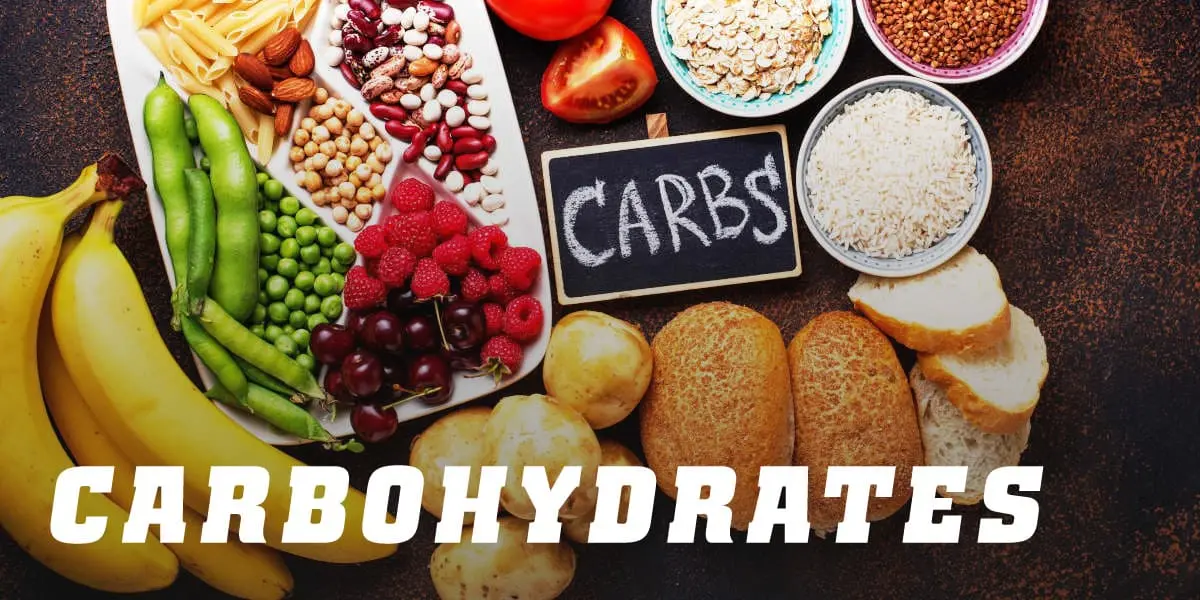
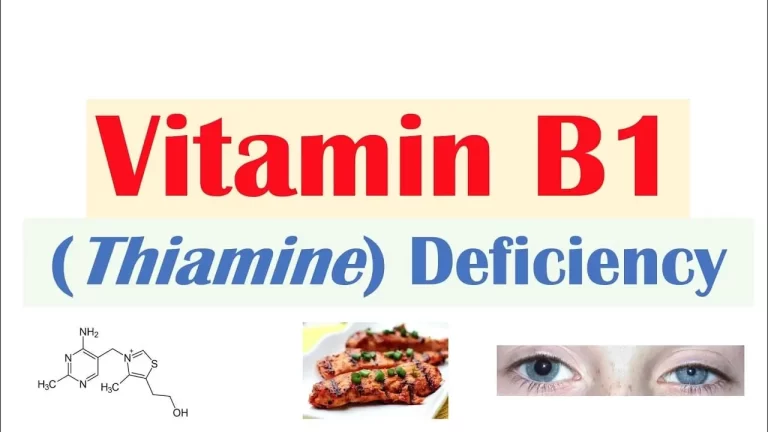
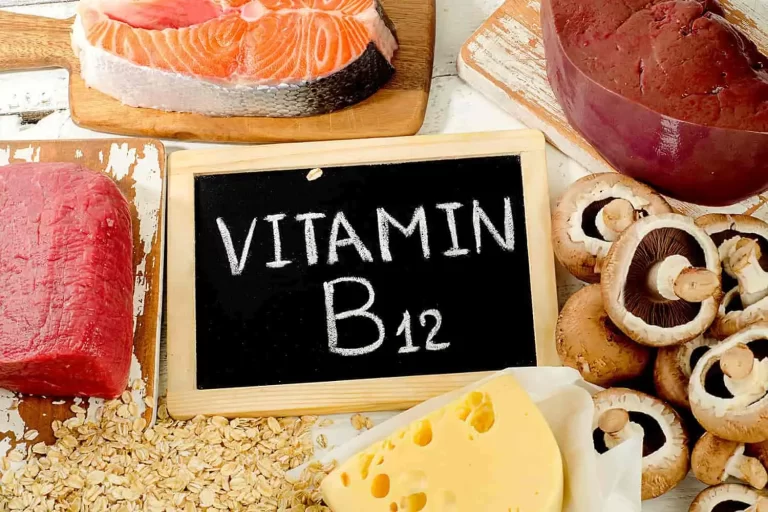
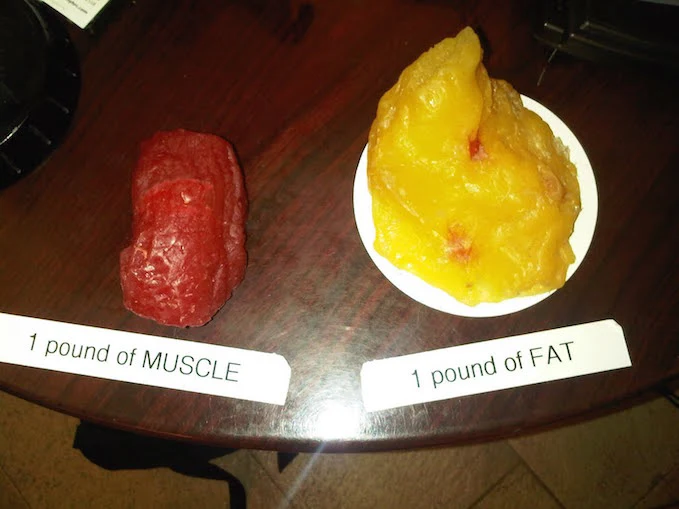
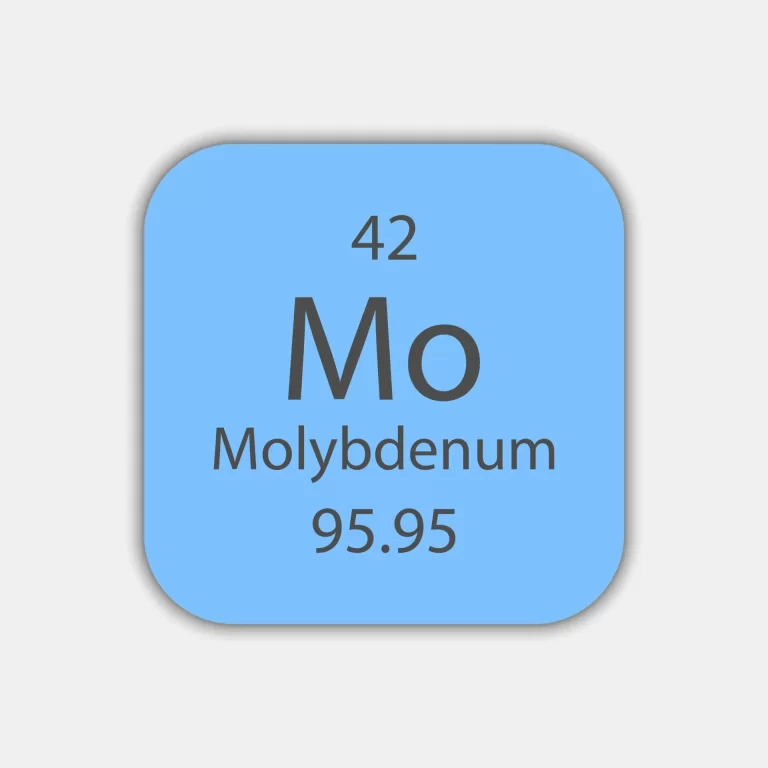
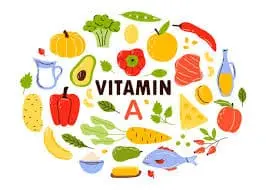
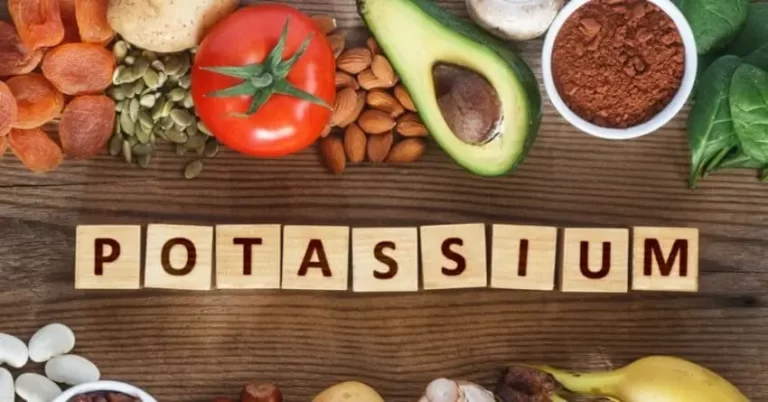
5 Comments